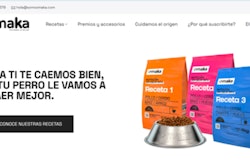
It’s come to this: U.S. pet food inflation is still rising, but I’m trying to find any bright spots in this continuing bleak scene, so I feel compelled to point out that it didn’t rise by as much in November 2022 as it did the previous two months.
On the other hand, producer prices increased for dry dog food—the largest category of pet food in the U.S. market—and typically, those increases eventually show up in retail prices. Thus, the pet food inflation outlook is still looking pretty dark.
All this data comes courtesy of the U.S. Bureau of Labor Statistics, then gathered, analyzed and shared by John Gibbons. Thanks again to John.
Pet food inflation still exceeding CPI, human food
In November 2022, U.S. pet food inflation reached 15.7% year over year (YOY). This is approaching a new high, yet it’s “only” .7% more than in October, when the figure hit 15% YOY. This is (sort of) good news in that pet food inflation had jumped a full percentage point from September, when it was 14%, to October and nearly that much from August, when it was 13.1%, to September.
Unfortunately, that 15.7% for November is more than twice the overall U.S. consumer price index (CPI), which has slowed; it’s now at 7.1% YOY, down from 7.7% in October. It’s worth noting, however, that the drop in the CPI was mostly driven by lower prices for gas and other automotive products and services, according to Gibbons. Prices are still higher than normal, and in some cases still rising, in other consumer goods categories besides pet food. For example, inflation for “food at home” (essentially groceries) has somewhat stabilized at 12.4% YOY, but prices in specific subcategories, such as produce, continue to soar.
Similarly, inflation for the total pet care category was up in November, at 12% YOY, driven by ongoing price increases in pet food and pet services, while prices for pet supplies and veterinary services were lower or only slightly higher than in October.
Producer prices for dry dog food on the rise
As for the U.S. pet food producer index (PPI), it reached 14% YOY in November, down slightly from October. For dog and cat food specifically, the PPI in November was 13.5%, driven mainly by the 11.9% PPI for dry and semi-moist dog food, which represented a 1.8% increase over October.
While most dog and cat food categories had stabilized in October in terms of the PPI, dry dog food was up slightly then, too; now the larger jump in November could portend even higher increases in pet food retail prices because of the category’s size and market share.
The highest YOY rise in PPI still belongs to wet dog food, at 22.6%, but that was up only .1% from October. Wet cat food’s PPI increased by the same amount from October to November, reaching 18.8% YOY. For dry and semi-moist cat food, the PPI in November was 5.4% YOY. That level of increase has probably still been passed on to, and thus experienced, by many cat owners, but compared to the other pet food PPIs and especially to pet food retail prices, an increase in only the single digits comes as almost welcome news.
















